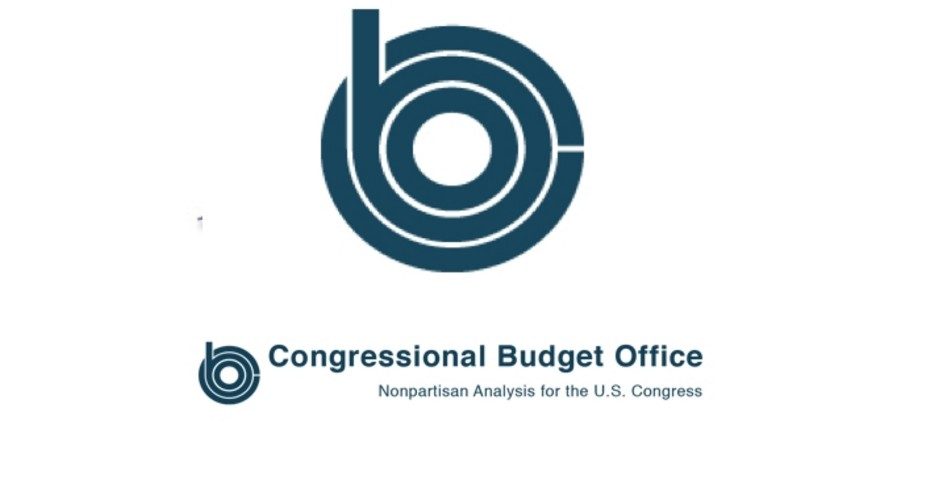
A report released on Monday by the Congressional Budget Office projects that the federal debt will be $30 trillion within a decade, citing new spending, tax cuts, and ObamaCare as some of the primary causes.
The Congressional Budget Office is a non-partisan governmental entity that serves to forecast the impact of governmental policies on future government revenues. Its projections on the federal debt and its impact on the economy are disheartening.
Analysts predict that the deficit will increase from $18.1 trillion at the end of 2015 to $39.3 trillion in 2026, marking an increase of nearly $20 trillion from when President Obama took office in 2009, at which time the debt stood at $10.6 trillion.
“In 2016, the federal budget deficit will increase, in relation to the size of the economy, for the first time since 2009, according to the Congressional Budget Office’s estimates,” the report begins. “If current laws generally remain unchanged, the deficit would grow over the next 10 years, and by 2026 it would be considerably larger than its average over the past 50 years.”
The CBO predicts that 2016 will be the first time that the deficit has risen in relation to the size of the economy since it peaked in 2009 at 9.8 percent.
The Congressional Budget Office cites several reasons for the growing deficit. The CBO contends that tax cuts have resulted in higher deficits, simply because they have not been balanced by spending cuts.
According to the CBO report, the projected 2016 deficit is $130 billion higher than was predicted in August 2015, largely as a result of the budget deal struck between Democrats and Republicans last year that maintained tax cuts without significant spending cuts and is projected to create a deficit of about $750 billion.
CBO also warned that rising deficits are projected to increase overall federal debt held by the public to up to 76 percent of GDP by the end of 2016, “higher than it has been since the years immediately following World War II,” according to the report. And without ample change, that figure will jump to 86 percent by the end of the 10-year period.
Rising debt would have “serious negative consequences for the budget and the nation,” the CBO report cautions, which include the following:
Substantial rise on interest payments
Reduction in the nation’s capital stock, resulting in lower productivity and total wages
Decreased flexibility in government’s use of tax dollars
Increased possibility of a fiscal crisis, while simultaneously minimalizing the possibility that investors would want to finance the government’s borrowing without “very high” interest rates
Predictably, the report finds that the largest federal outlays continue to be Social Security, Medicaid, and Medicare. Mandatory federal outlays, which includes Social Security, Medicaid, and Medicare, will be $168 billion higher this year than last year, while discretionary outlays are projected to be $32 billion higher.
The CBO projects that federal outlays for Social Security, the largest federal program, will increase from 4.9 percent in 2016 to 5.9 percent in 2026, while outlays for major healthcare programs such as Medicare, Medicaid, and the Children’s Health Insurance Program (CHIP) will increase by approximately the same percentage, to 6.6 by 2026.
Without massive changes to governmental spending practices, the CBO asserts that the outlook will become more grim.
“Beyond the 10-year period, if current laws remained in place, the pressures that had contributed to rising deficits during the baseline period would accelerate and push debt up even more sharply. Three decades from now, for instance, debt held by the public is projected to equal 155 percent of GDP, a higher percentage than any previously recorded in the United States,” the analysts concluded.
The CBO also observes that ObamaCare has been particularly problematic, as it has resulted in fewer workers in the labor force, which hurts an economy that has been struggling to recover. “The ACA’s largest effect on the labor market — especially as overall employment conditions improve — will come from provisions of the act that raise effective marginal tax rates on earnings, thereby reducing how much some people choose to work,” the CBO notes. “The act also directly imposes higher taxes on some people’s labor income. Because both effects on labor supply will grow over the next few years, CBO projects they will subtract from economic growth over that period.”
CBO Director Douglas Elmendorf testified before Congress in February 2014 that ObamaCare provided a disincentive for people to work, particularly because of the subsidies, and warned of the detrimental impacts it would have on the economy and labor force. “By providing heavily subsidized health insurance to people with very low income and then withdrawing those subsidies as income rises, the act creates a disincentive for people to work — relative to what could have been the case in the absence of that act,” Elmendorf observed at the time.
When asked about the impact that the reduction in laborers would have on the economy, Elmendorf responded, “It is the central factor in slowing economic growth. After we get out of this current downturn, but later in this decade and beyond, the principal reason why we think the economic growth will be less than it was for most of my lifetime will be a slower rate of growth by the labor force.”
Two years later, the CBO seems to have gotten it right.
The CBO also attributes a reduction in the labor force to the aging members of the baby-boom generation, as well as the “lingering effects of the recession and ensuing weak recovery.”
And despite projections that Americans’ real incomes will rise on average, the increase will push many households into higher tax brackets, “dampening growth in labor supply,” underscoring once more that the federal tax code needs to be revisited.
Democrats and Republicans continue to debate strategies to address the federal debt, with Republicans advocating for tax cuts and Democrats calling for tax increases and increased government spending to stimulate economic growth. They typically reach agreements that include a mix of these strategies, missing the mark as usual.
When the federal government cuts taxes while maintaining or increasing current spending, the federal government typically uses borrowing to finance its spending, which increases the deficit and inflates the dollar. According to the Heritage Foundation, cuts to government spending promote economic growth by freeing resources in the economy for investment and job creation. Without significant cuts to federal spending, significant economic growth cannot be achieved.




